Microstructures and Properties of Porous Liquid-Phase-Sintered SiC Ceramic by Hot Press Sintering
Abstract
1. Introduction
2. Experimental Details
2.1. Raw Materials
2.2. Processing
2.3. Characterization
3. Results and Discussion
3.1. Pore Microstructures of Porous L-SiC Ceramics
3.2. Flexural Strengths of Porous L-SiC Ceramics
3.3. Gas Permeability of Porous L-SiC Ceramics
4. Conclusions
Author Contributions
Funding
Acknowledgments
Conflicts of Interest
References
- Zhao, P.; Li, Q.; Yi, R.; Wang, Z.; Lu, L.; Cheng, X.; Dong, S. Fabrication and microstructure of liquid sintered porous SiC ceramics through spark plasma sintering. J. Alloys Compd. 2018, 748, 36–43. [Google Scholar] [CrossRef]
- Rojas, P.C.; Piderit, G.J.; Toro, P. Development of open-pore silicon carbide foams. Key Eng. Mater. 1997, 132–136, 1731–1734. [Google Scholar] [CrossRef]
- Passalacqua, E.; Freni, S.; Barone, F. Alkali resistance of tap-cast SiC porous ceramic membranes. Mater. Lett. 1998, 34, 257–262. [Google Scholar] [CrossRef]
- Wu, H.; Li, Y.; Yun, S.; Liu, X.; Huang, Z.; Jiang, D. Effects of particle grading on porous gelcasted and solid-state-sintered SiC ceramics with improved connectivity. J. Alloys Compd. 2018, 732, 547–554. [Google Scholar] [CrossRef]
- Suwanmethanond, V.; Goo, E.; Liu, P.K.T.; Johnston, G.; Sahimi, M.; Tsotsis, T.T. Porous silicon carbide sintered substrates for high-temperature membranes. Ind. Eng. Chem. Res. 2000, 39, 3264–3271. [Google Scholar] [CrossRef]
- Moene, R.; Makkee, M.; Moulijin, J.A. High surface area silicon carbide as catalyst support characterization and stability. Appl. Catal. A Gen. 1998, 167, 321–330. [Google Scholar] [CrossRef]
- She, J.H.; Ohji, T.; Kanzaki, S. Oxidation bonding of porous silicon carbide ceramics with synergistic performance. J. Eur. Ceram. Soc. 2004, 24, 331–334. [Google Scholar] [CrossRef]
- Agrafiotis, C.C.; Mavroidis, I.; Konstandopoulos, A.G.; Hoffschmidt, B.; Stobbe, P.; Romero, M.; Fernandez-Quero, V. Evaluation of porous silicon carbide monolithic honeycombs as volumetric receivers/collectors of concentrated solar radiation. Sol. Energy Mater. Sol. Cells 2007, 91, 474–488. [Google Scholar] [CrossRef]
- Kim, Y.; Min, K.; Shim, J.; Kim, D.J. Formation of porous SiC ceramics via recrystallization. J. Eur. Ceram. Soc. 2012, 32, 3611–3615. [Google Scholar] [CrossRef]
- Wu, H.; Li, Y.; Yan, Y.; Yin, J.; Liu, X.; Huang, Z.; Lee, S.-H.; Jiang, D. Processing, microstructures and mechanical properties of aqueous gelcasted and solid-state-sintered porous SiC ceramics. J. Eur. Ceram. Soc. 2014, 34, 3469–3478. [Google Scholar] [CrossRef]
- Wang, F.; Yin, J.; Yao, D.; Xia, Y.; Zuo, K.; Xu, J.; Zeng, Y. Fabrication of porous SiC ceramics through a modified gelcasting and solid state sintering. Mater. Sci. Eng. A 2016, 654, 292–297. [Google Scholar] [CrossRef]
- Ge, H.; Wang, G.; Yuan, B.; Dong, B.; Li, H. Fabrication and microstructure of porous SiC ceramics using suspension emulsions as pore-forming agents. Ceram. Int. 2014, 40, 11705–11711. [Google Scholar] [CrossRef]
- Fukushima, M.; Nakata, M.; Zhou, Y.; Ohji, T.; Yoshizawa, Y.-I. Fabrication and properties of ultra highly porous silicon carbide by the gelation–freezing method. J. Eur. Ceram. Soc. 2010, 30, 2889–2896. [Google Scholar] [CrossRef]
- Wang, F.; Yao, D.; Xia, Y.; Zuo, K.; Xu, J.; Zeng, Y. Porous SiC ceramics prepared via freeze-casting and solid state sintering. Ceram. Int. 2016, 42, 4526–4531. [Google Scholar] [CrossRef]
- Zhao, J.; Ru, H.; Wang, W.; Yue, X.; Xu, Y.; Zhang, C. Fabrication of three-dimensional interconnected hierarchically macroporous SiC by a modified freeze-gelcasting method. Mater. Lett. 2015, 148, 147–150. [Google Scholar] [CrossRef]
- Liu, S.; Zeng, Y.-P.; Jiang, D. Effects of CeO2 addition on the properties of cordierite-bonded porous SiC ceramics. J. Eur. Ceram. Soc. 2009, 29, 1795–1802. [Google Scholar] [CrossRef]
- Bai, C.-Y.; Deng, X.-Y.; Li, J.-B.; Jing, Y.-N.; Jiang, W.-K.; Liu, Z.-M.; Li, Y. Fabrication and properties of cordierite–mullite bonded porous SiC ceramics. Ceram. Inter. 2014, 40, 6225–6231. [Google Scholar] [CrossRef]
- Sung, I.-K.; Yoon, S.-B.; Yu, J.-S.; Kim, D.-P. Fabrication of macroporous SiC from templated preceramic polymers. Chem. Commun. 2002, 14, 1480–1481. [Google Scholar] [CrossRef]
- Qian, J.-M.; Wang, J.-P.; Qiao, G.-J.; Jin, Z.-H. Preparation of porous SiC ceramic with a woodlike microstructure by sol-gel and carbothermal reduction processing. J. Eur. Ceram. Soc. 2004, 24, 3251–3259. [Google Scholar] [CrossRef]
- Gupta, P.; Wang, W.; Fan, L.-S. Synthesis of high-surface-area SiC through a modified sol-gel route control of the pore structure. Ind. Eng. Chem. Res. 2004, 43, 4732–4739. [Google Scholar] [CrossRef]
- Ihle, J.; Herrmann, M.; Adler, J. Phase formation in porous liquid phase sintered silicon carbide Part 1: Interaction between Al2O3 and SiC. J. Eur. Ceram. Soc. 2005, 25, 987–995. [Google Scholar] [CrossRef]
- Fukushima, M.; Zhou, Y.; Yoshizawa, Y.-I. Fabrication and microstructural characterization of porous SiC membrane supports with Al2O3–Y2O3 additives. J. Membr. Sci. 2009, 339, 78–84. [Google Scholar] [CrossRef]
- Zhou, Y.; Fukushima, M.; Miyazaki, H.; Yoshizawa, Y.-I.; Hirao, K.; Iwamoto, Y.; Sato, K. Preparation and characterization of tubular porous silicon carbide membrane supports. J. Membr. Sci. 2011, 369, 112–118. [Google Scholar] [CrossRef]
- She, J.; Yang, J.-F.; Kondo, N.; Ohji, T.; Kanzaki, S.; Deng, Z.-Y. High-strength porous silicon carbide ceramics by an oxidation-bonding technique. J. Am. Ceram. Soc. 2004, 85, 2852–2854. [Google Scholar] [CrossRef]
- Resmi, V.G.; Sree Manu, K.M.; Lakshmi, V.; Brahmakumar, M.; Rajan, T.P.D.; Pavithran, C.; Pai, B.C. Processing of silica bonded porous SiC preform for metallic composites. J. Porous. Mater. 2015, 22, 1445–1454. [Google Scholar] [CrossRef]
- Ihle, J.; Herrmann, M.; Adler, J. Phase formation in porous liquid phase sintered silicon carbide: Part II Interaction between Y2O3 and SiC. J. Eur. Ceram. Soc. 2005, 25, 997–1003. [Google Scholar]
- Kim, Y.-W.; Kim, S.-H.; Song, I.-H.; Kim, H.-D.; Park, C.B. Fabrication of open-cell, microcellular silicon carbide ceramics by carbothermal reduction. J. Am. Ceram. Soc. 2005, 88, 2949–2951. [Google Scholar] [CrossRef]
- Bai, C.-Y.; Li, Y.; Liu, Z.-M.; Liu, P.-W.; Deng, X.-Y.; Li, J.-B.; Yang, J. Fabrication and properties of mullite-bonded porous SiC membrane supports using bauxite as aluminum source. Ceram. Int. 2015, 41, 4391–4400. [Google Scholar] [CrossRef]
- Ding, S.; Zhu, S.; Zeng, Y.-P.; Jiang, D. Fabrication of mullite-bonded porous silicon carbide ceramics by in situ reaction bonding. J. Eur. Ceram. Soc. 2007, 27, 2095–2102. [Google Scholar] [CrossRef]
- Kumar, B.V.M.; Eom, J.-H.; Kim, Y.-W.; Song, I.-H.; Kim, H.-D. Effect of aluminum hydroxide content on porosity and strength of porous mullite-bonded silicon carbide ceramics. J. Ceram. Soc. Jpn. 2011, 119, 367–370. [Google Scholar] [CrossRef]
- Liu, S.; Zeng, Y.-P.; Jiang, D. Fabrication and characterization of cordierite-bonded porous SiC ceramics. Ceram. Int. 2009, 35, 597–602. [Google Scholar] [CrossRef]
- Dong, S.; Zhu, S.; Zeng, Y.; Jiang, D. Effect of Y2O3 addition on the properties of reaction-bonded porous SiC ceramics. Ceram. Int. 2006, 32, 461–466. [Google Scholar] [CrossRef]
- Bukhari, S.Z.A.; Ha, J.-H.; Lee, J.; Song, I.-H. Fabrication and optimization of a clay-bonded SiC flat tubular membrane support for microfiltration applications. Ceram. Int. 2017, 43, 7736–7742. [Google Scholar] [CrossRef]
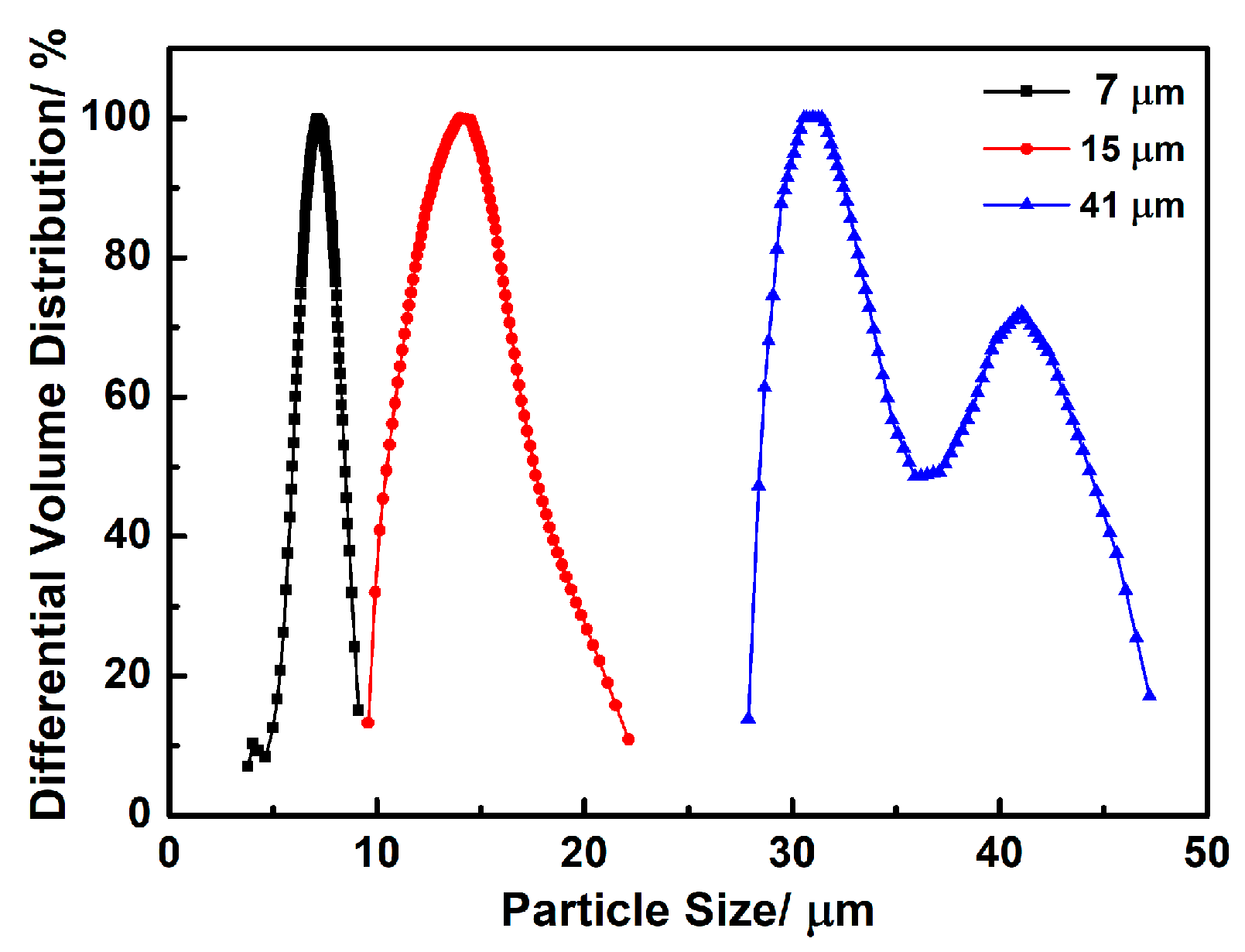

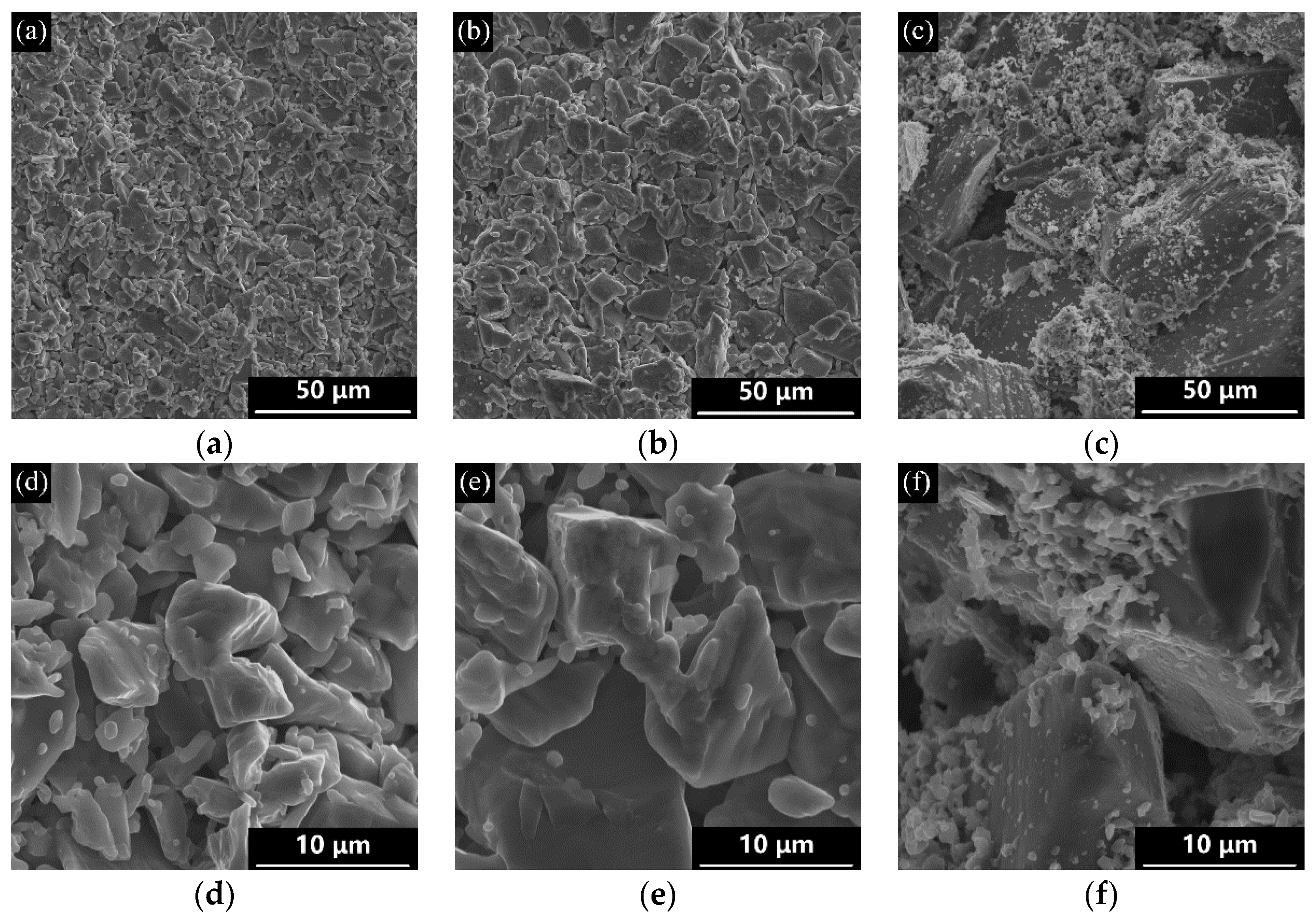
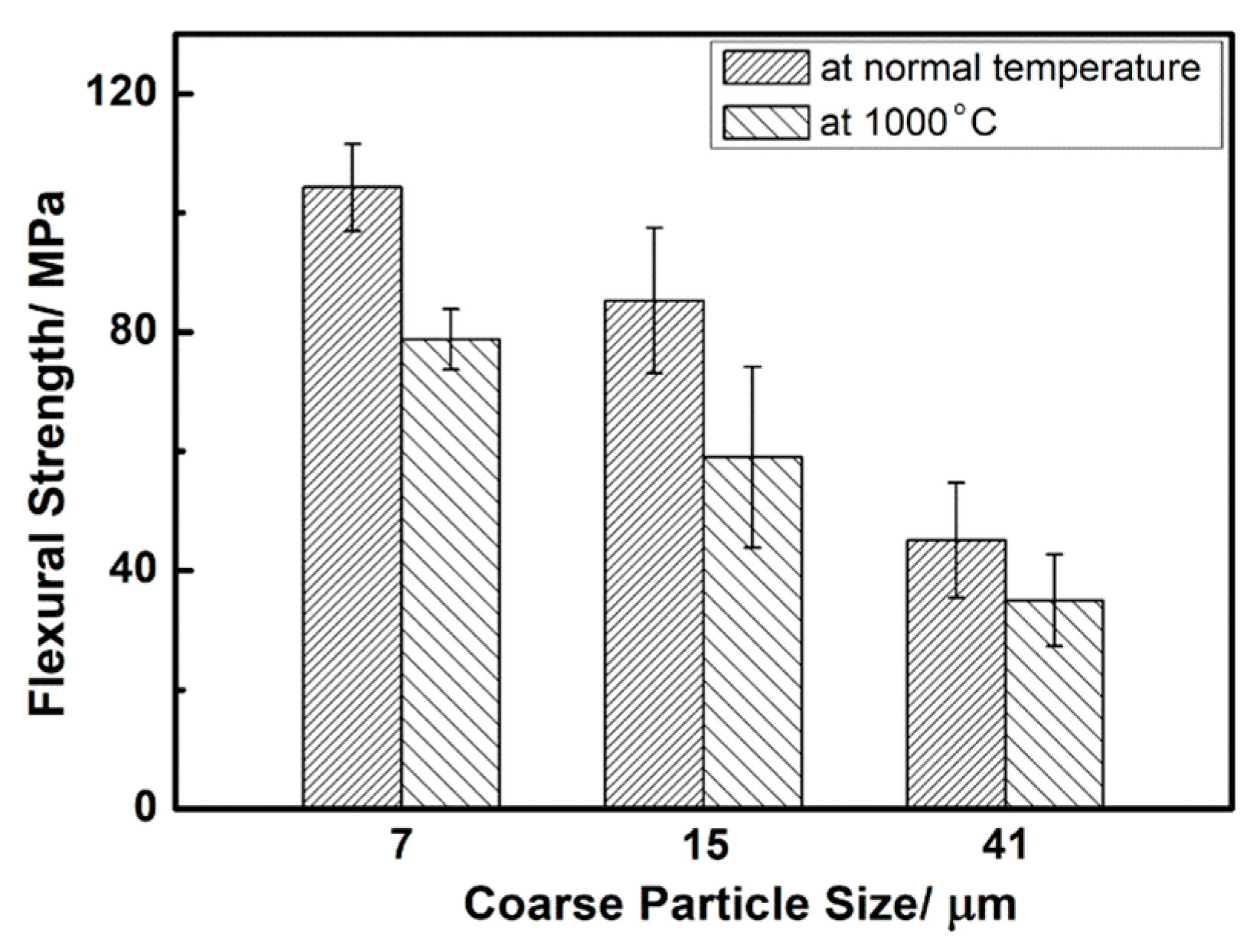
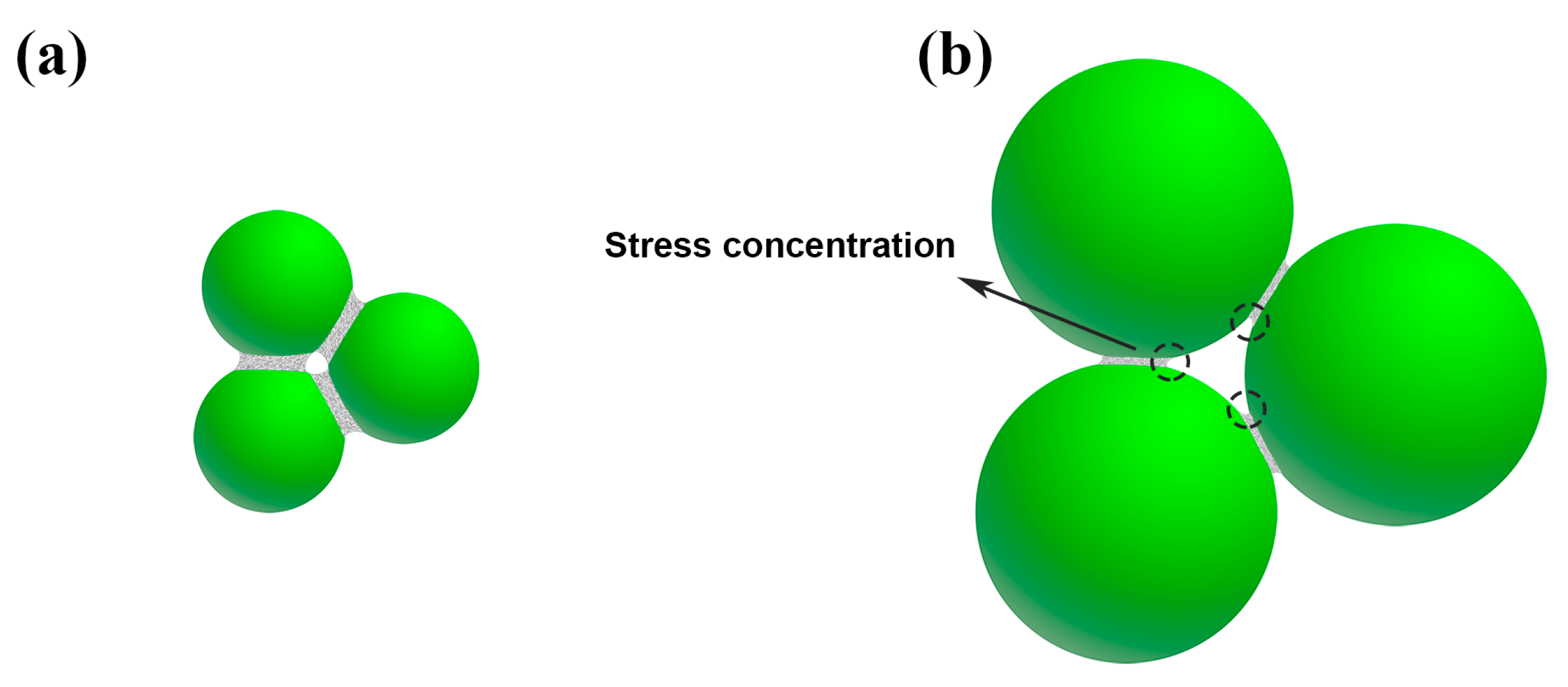
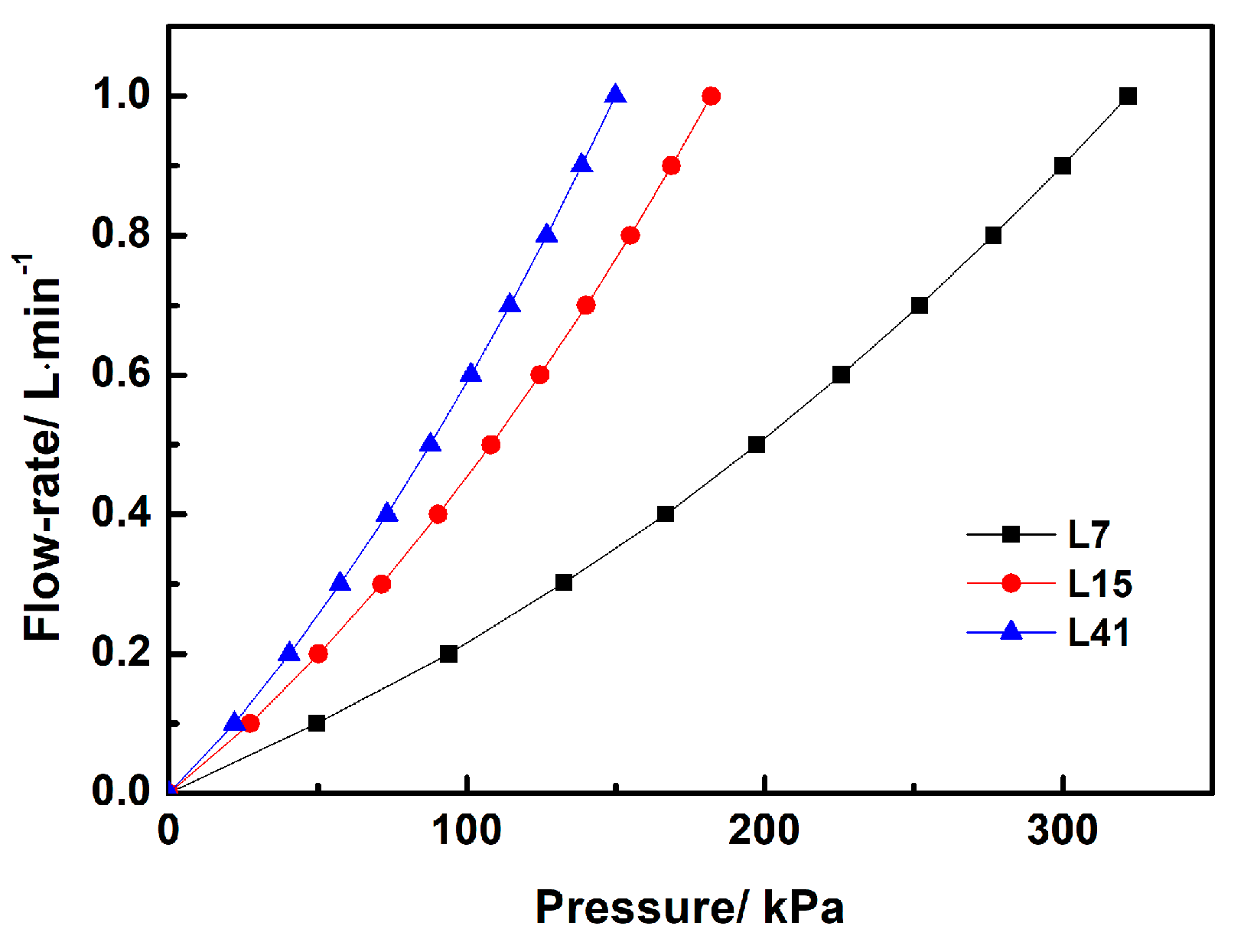
| Sample | Relative Density (%) | Total Porosity (%) | Apparent Porosity (%) | Closed Porosity (%) |
|---|---|---|---|---|
| L7 | 66.0 | 34.0 | 33.5 | 0.5 |
| L15 | 70.1 | 29.9 | 29.8 | 0.1 |
| L41 | 74.1 | 25.9 | 25.8 | 0.1 |
© 2019 by the authors. Licensee MDPI, Basel, Switzerland. This article is an open access article distributed under the terms and conditions of the Creative Commons Attribution (CC BY) license (http://creativecommons.org/licenses/by/4.0/).
Share and Cite
Li, Y.; Wu, H.; Liu, X.; Huang, Z. Microstructures and Properties of Porous Liquid-Phase-Sintered SiC Ceramic by Hot Press Sintering. Materials 2019, 12, 639. https://doi.org/10.3390/ma12040639
Li Y, Wu H, Liu X, Huang Z. Microstructures and Properties of Porous Liquid-Phase-Sintered SiC Ceramic by Hot Press Sintering. Materials. 2019; 12(4):639. https://doi.org/10.3390/ma12040639
Chicago/Turabian StyleLi, Yajie, Haibo Wu, Xuejian Liu, and Zhengren Huang. 2019. "Microstructures and Properties of Porous Liquid-Phase-Sintered SiC Ceramic by Hot Press Sintering" Materials 12, no. 4: 639. https://doi.org/10.3390/ma12040639
APA StyleLi, Y., Wu, H., Liu, X., & Huang, Z. (2019). Microstructures and Properties of Porous Liquid-Phase-Sintered SiC Ceramic by Hot Press Sintering. Materials, 12(4), 639. https://doi.org/10.3390/ma12040639





